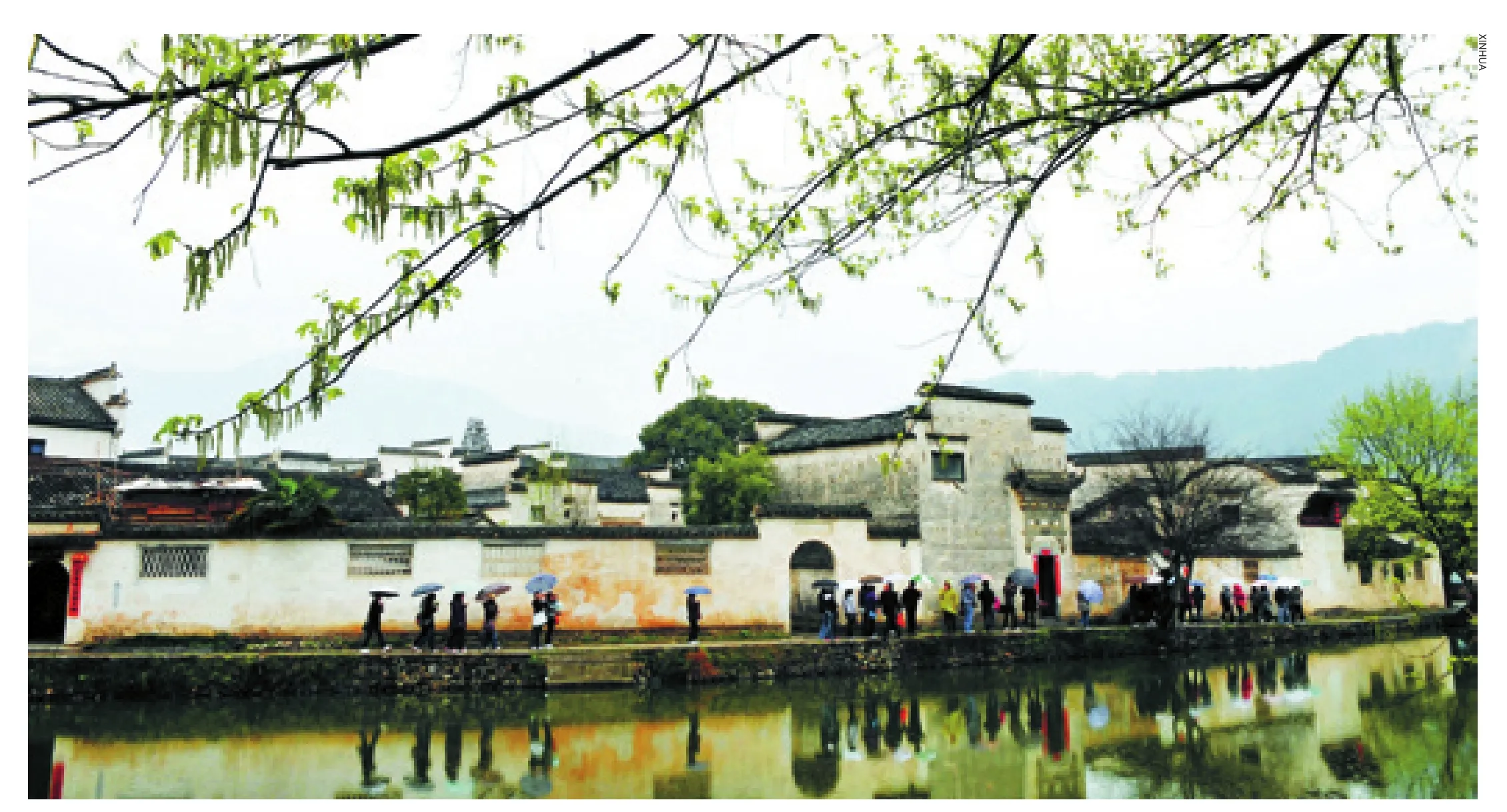Preserving History
2013-03-15zanjifang
Hong Kong actor Jackie Chan recently revealed plans to donate four ancient Chinese buildings that he had collected to a university in Singapore. The Huistyle structures,featuring grey tiles and white walls, are some of the most important architectural vestiges in the country. The style was made popular during the Ming and Qing dynasties (1368-1911) in the area where Anhui, Jiangxi and Zhejiang provinces meet. Such dwellings that remain have been added to the list of world intangible cultural heritage by UNESCO.
The news has stirred debate over whether China’s historic relics should be donated to other countries and how to better protect cultural heritage. The following are excerpts of opinions:
Opponents
Cheng Jiyue (www.xinhuanet.com): It is widely recognized within the relic protection circle that the best way to protect ancient buildings is to leave them where they are. Once these structures are removed to a new place, away from the climatic,geographic and cultural environment
they have been in for so many years,the value of certain relics and the cultural significancethey possess will gradually vanish. The Hui-style whitewalled wood and stone buildings, boasting delicate carvings, belong to the localnatural environment featuring green mountainsand clean rivers.Elsewhere, these buildings will not be as beautiful as they are now.
Li Yong (People’s Daily): Currently, every province in China has a law forbidding the sale of protected ancient buildings. But even if these structures are not subject to law, it is still improper to send them abroad. A piece of art will always lose part of its significance when displaced.
These buildings are Chinese in nature and they are meant to stay in the country. The climate in Singapore might not be that healthy. More importantly, once leaving their birthplace and hometown,the origi-Preserving History nal value of these ancient buildings mightsoon vanish.
Supporters
Bi Xiaozhe (www.eastday.com): More than a decade ago, the damaging and selling of ancient architecture and ordinary residential houses became very popular, with the selling of Wulong Temple in Changzhou of east China’s Jiangsu Province as a typical example. In November 2005, the temple was sold for 300 million yuan ($49.18 million) to real estate developers.Furthermore, another 8,000 Hui-style traditional buildings are under threat of being sold. The cruel reality and tragic fate of these ancient structures worries Jackie Chan, who has been very concerned about conservation efforts.Against such a backdrop, it seems natural and inevitable for him to donate his preserved old houses to a Singapore university.
This event, to some extent, is a reminder to relevant departments of the urgency of protecting local ancient buildings. Chan is widely recognized as a patriotic movie star, but even he does not trust his home country’s ability to preserve historic relics.This is a shameful lesson that we should learn from.
Chan’s choice of Singapore as the destination of his buildings is hurting national dignity. It’s really high time for the country to take tangible measures to prevent the silly practice of dismantling precious ancient structures for short-sighted gain.
Yuan Guangkuo (Guangzhou Daily): Most people hope that Chan will think carefully before he puts his plan into practice. Anyway, China’s historic buildings should stay at home. Why doesn’t Chan donate his collection to universities in China? Is it because local institutes are not prepared to receive his donation or lack the relevant scientific technology to protect such ancient structures? If these universities are ready to receive these buildings,they should try to retain Chan’s collection at home through various efforts and channels. If Chinese universities do lack relevant protection capabilities,this event provides an opportunity for them to win more inputs in relevant upgrades.


POETIC ROMANCE: Tourists visit Hongcun, a village in Yixian County, east China’s Anhui Province, famous for its well-preserved Ming and Qing dynasty residences
Besides, ancient buildings are different from common cultural relics, demanding tough environment and protection conditions. The climate and geographical situations in Singapore are not favorable to the protection of Chinese ancient buildings.More importantly, when displaced, ancient buildings will easily lose their original value as historic relics. Is it possible for some authorities or personnel to dissuade Chan from donating his collection?
Quite possibly, these old buildings will be regarded as significant cultural and historic relics in the future. By then, it might be too late to get these treasured pieces back.
Chao Bai (Nanfang Daily): It seems that Chan’s donation plan has offended some Chinese, but will such actions really impact the vast majority? I don’t think so. This is not the first time we experienced such events. Some people might appear indignant at first, but would soon forget what happened. In 2003, famous Huistyle building Yingyutang was moved to the United States, and ironically, at that time, the event was highly spoken of by the public. That project took seven years from planning to detailed implementation. Actually, in 1996, there was already a trend of Hui-style buildings’ being transferred to other countries. At most, some people express their anger, but that was all.
It’s not a time for us to criticize Chan, but to review what relevant departments have done to China’s ancient buildings. Someday, when massive attention is paid to the country’s historic relics protection efforts, then we may say the country’s heritage is well protected.
Cong Jianfeng (Wuhan Evening News):Chan has decided to send four traditional buildings to Singapore and according to him, “has the impulse” to donate six additional structures.
Why does he believe Singapore to be the “best destination” for these old Chinese buildings? It’s not a time to talk about patriotism, but to ponder the reason why he didn’t choose his home country.
Ancient buildings cannot be reborn. Poor protection will lead to the death of such structures.Singapore has a much shorter history than China.There are not so many ancient construction sites left there, and in the 1970s old buildings were widely torn down.
However, since 1971, several laws and regulations on the protection of old buildings have been passed in Singapore, which have been strictly implemented. As a result, this country that is comparatively short of historic relics never fails to shock tourists from abroad with its well-preserved old areas.
Back in China, we are blessed with so many beautiful ancient buildings and historic relics, but it seems that relevant departments are more interested in how to make money from, rather than preserving such priceless treasures.
Now, people are calling for further protection of Chinese cultural relics. Nevertheless, what matters is deeds, not words. Not only has Singapore offered to safeguard Chan’s ancient buildings, but also suggested the structures would be used as education materials for students in architecture.If Chan were offered the same treatment as this at home, maybe he would have reconsidered his plans. ■
